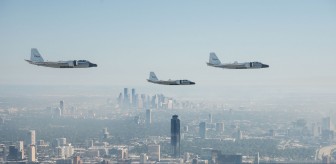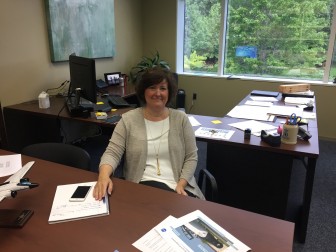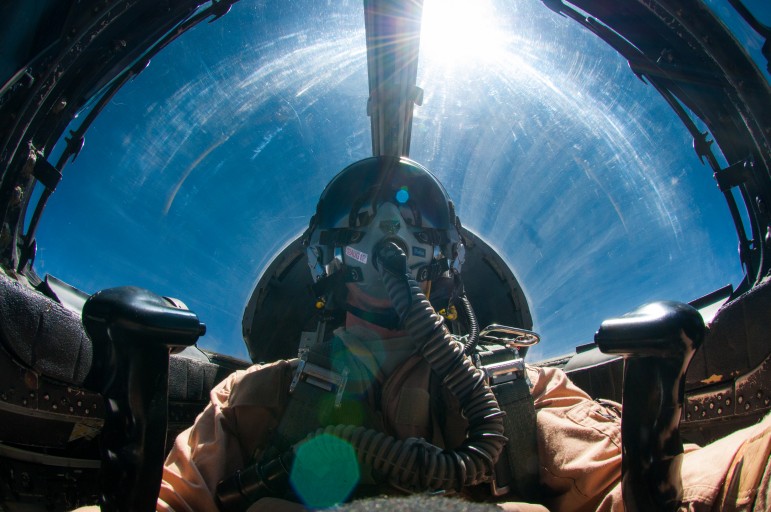High Technology Could Solve Solar Mysteries During Eclipse
Millions of Americans will see Monday’s solar eclipse, but besides the delight and awe that comes with such a big, cosmic event, it could yield important new measurements and a better understanding of our solar system. Cutting-edge imaging technology from a Birmingham-based nonprofit is set to fly along the eclipse’s path on two former military planes now operated by NASA.
Window (or Shadow) of Advantage
Normally, the sun is so bright and hot it makes studying anything near it difficult. But Birmingham’s Southern Research is taking advantage of the eclipse. Don Darrow of NASA and Southern Research says even with the best heat-imaging cameras, it’s hard to get a read on Mercury, the planet closest to the sun. It’s complicated, but he says, “basically, it’s too hot to be able to get accurate measurements through infrared. So this opportunity that we have, with the moon blocking it out — we’ll actually be able to get the first temperature gradients of Mercury that have been recorded.”
Temperature maps of Mercury won’t be the only goal when Darrow and an engineer in another retooled B-57 bomber start chasing the moon’s shadow south of Saint Louis. High-resolution images and video could help scientists solve a mystery at the center of our solar system.
“The intention is to try to identify why the outer layers of the sun are so much hotter than some of the inner layers,” he says.
And there’s yet another puzzle that Southern Research’s imaging system could resolve: whether asteroids called vulcanoids near Mercury exist. Astronomers think they might, but small objects close to the sun are hard to detect.
No Pressure at All
The telescopic cameras will try to find these objects and more from almost 10 miles above the Earth.
“We have a joystick in the back, like you’d see in the cockpit of an airplane. That’s how we manually control the sensors,” he says, adding, “There’s a lot that can go wrong. And I have to be on my game in order to make sure that I can either head off anything that I see coming, or overcome anything that happens.”
The Need for Speed
Down on the ground in Birmingham, Southern Research engineering project director Johanna Lewis says the eclipse moves really fast, so they have a strategy: two planes.
“One will fly with the shadow, but the shadow moves faster than the plane moves,” she explains. “So we’ll be able to get about four minutes of data out of the first plane. The second plane will come in and pick up where it left off and collect another four minutes. And so we’ll be able to stretch that to about eight minutes worth of data.”
That’s eight minutes of eclipse when the sun won’t overpower or damage the sensors. Lewis has faith in the mission team, too:
“NASA provides the planes, Southern Research provides the instruments that collect the data, and [Texas-based nonprofit] Southwest Research will be processing the data and doing the analysis.”
Some of those findings could be released in about a month. Darrow sees many potential benefits here.
“This mission is going to be historic for the Mercury observation, but I think we’re going to get some phenomenal images of the sun as well.”
Those images are set to be live-streamed on NASA TV. And you won’t even need special glasses or a modified B-57 bomber to see them.
Trump says ceasefire deal is near as Israeli strikes kill 138 Palestinians in Gaza
More than 60 of those killed were waiting for aid, according to Palestinian health officials. President Trump said Friday that talks over a ceasefire between Israel and Hamas are at a crucial stage.
President Trump says he wants to stage UFC fight on White House grounds
President Trump has announced that an Ultimate Fighting Championship bout will be held on the grounds of the White House next year, one of many events to be held to celebrate America's 250th birthday.
Russia hits Ukraine with largest aerial attack as Trump talks to Zelenskyy and Putin
Russian missiles and drones hammered Kyiv in an overnight attack, the largest aerial assault on the Ukrainian capital since the war began more than three years ago.
‘Antagonized for being Hispanic’: Growing claims of racial profiling in LA raids
Immigration agents are raiding known hubs for Latino workers: day laborer gathering spots, street vendor corners and car washes. Legal advocacy groups say their tactics are unconstitutional.
Why is the dollar off to a weak start this year?
The U.S. dollar had its worst start this year in more than half a century. Harvard University economics professor Kenneth Rogoff says President Trump is accelerating the decline.
17 everyday people share what freedom means to them in today’s America
This Independence Day, NPR wanted to know how the freedoms and ideals of the U.S. have been on readers' minds.









